'Massive shift' in food shopping habits as prices soar
- Published
- comments
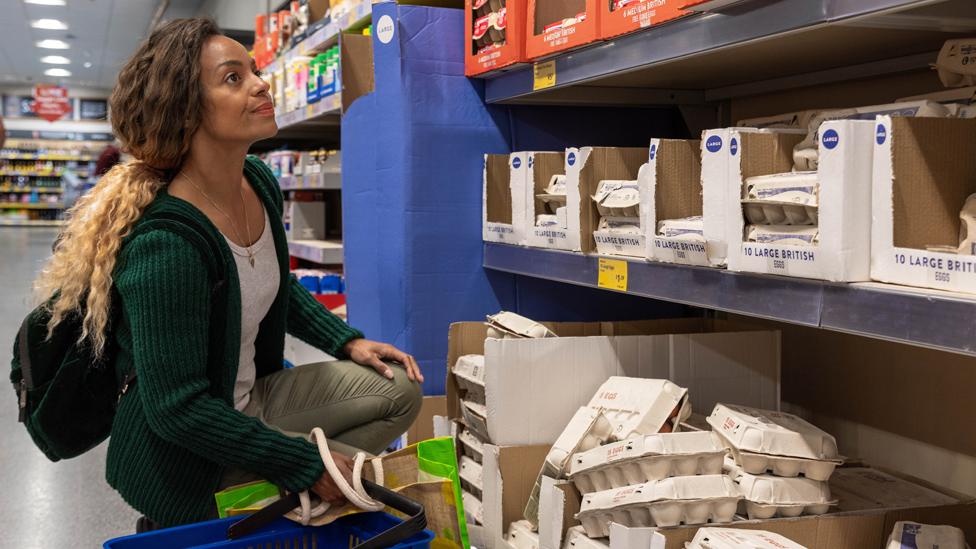
There has been a "massive shift" in the way we do our grocery shopping since the pandemic, analyst firm Kantar has told the BBC.
Among the changes, shoppers now visit the supermarket less often, spend more on own-label goods and are turning to loyalty schemes to get discounts.
The cost-of-living crisis has helped drive the changes, as food prices soar.
But trends such as the rise of the discounters Aldi and Lidl go back further.
The BBC has identified five key ways shopping has changed based on data exclusively compiled by Kantar.
1. We shop less often but spend more
According to the figures, the average household made 18 trips to a grocer a month before Covid, but now it is down to around 16 times a month.
We're also spending more on our main shop than before the pandemic - although we're not splurging like we did in lockdown.
"We still haven't got back to the shops like we used to," Fraser McKevitt, head of retail and consumer insight at Kantar, tells the BBC.
"People are working from home a bit more which cuts down the opportunities to shop."
Richard Walker, executive chairman of Iceland, says customer behaviour at the supermarket confirms the trend.
"We're seeing more volume of sales in terms of products being bought, but actually less shopper frequency in stores," he says. "So people are shopping more at month-end."
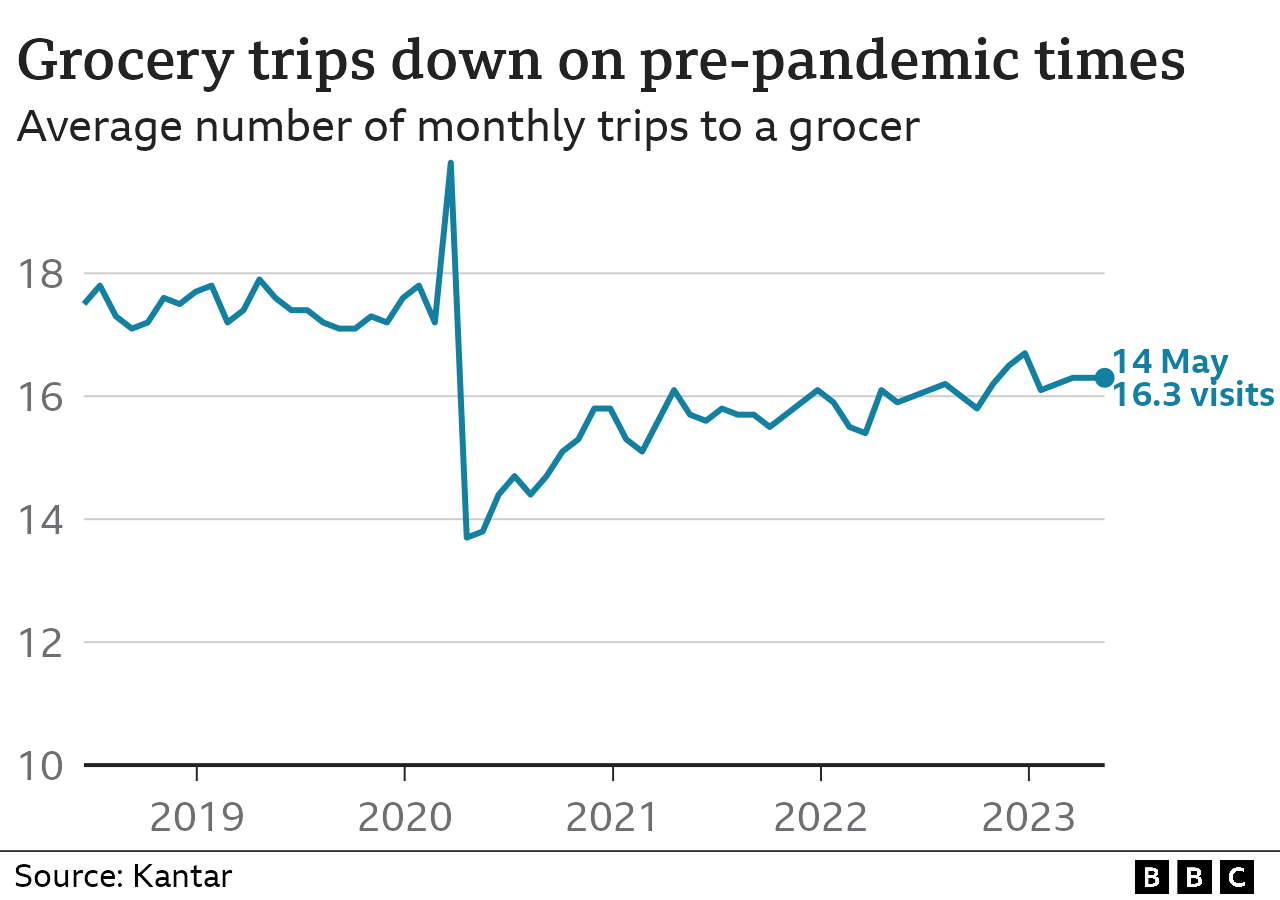
2. The shift to online has slowed
Almost 12% (11.7%) of UK grocery spending today is online, down from a peak of 15.4% in February 2021 at the height of the pandemic, Kantar's data shows.
Mr McKevitt says this is because many older people who took up online shopping in lockdown have given it up.
"Those people have got time now to go out to shops and probably enjoy taking a trip out and going to see people."
That said, online shopping is still more popular that than it was just before Covid, when it accounted for around 8% of grocery spending.
Many younger people will "use online shopping as a default" as time goes on, says Catherine Shuttleworth, founder of retail analysts Savvy Marketing.
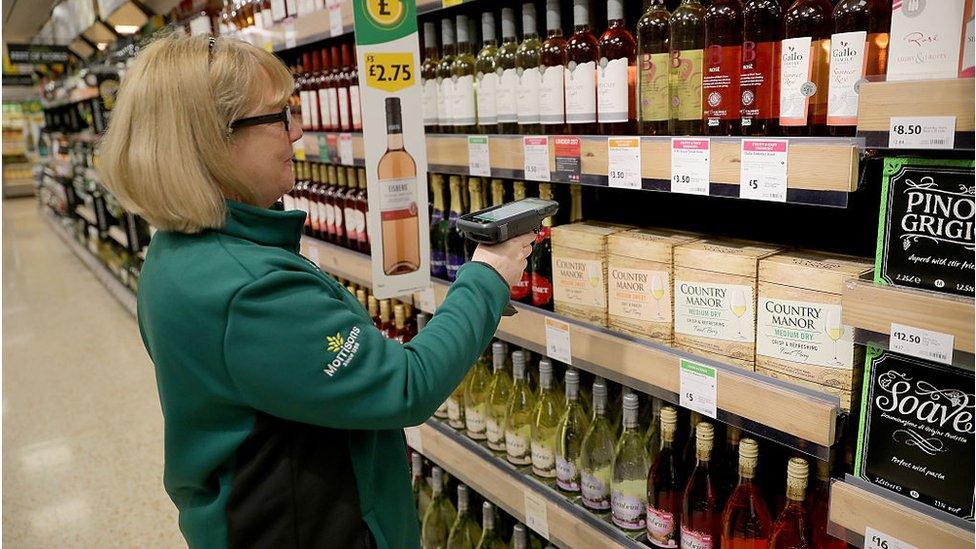
3. The rise of own-label products
In 2005 about 45% of grocery sales were own brand, but by the end of 2022 it had risen to 51%, according to Kantar.
Shoppers have been swapping established brands for cheaper supermarket alternatives as food prices rise at their fastest rate in 45 years.
Ms Shuttleworth says: "Even shoppers who would have rejected own label are now buying own label. So it's not just people forced to do it, people who have a choice are also downtrading."
Supermarkets have also been expanding their own-label ranges as it helps them stand out in a competitive market.
It's possible the trend could be temporary, Ms Shuttleworth says, but people who try own-label brands might also like and stay with them.
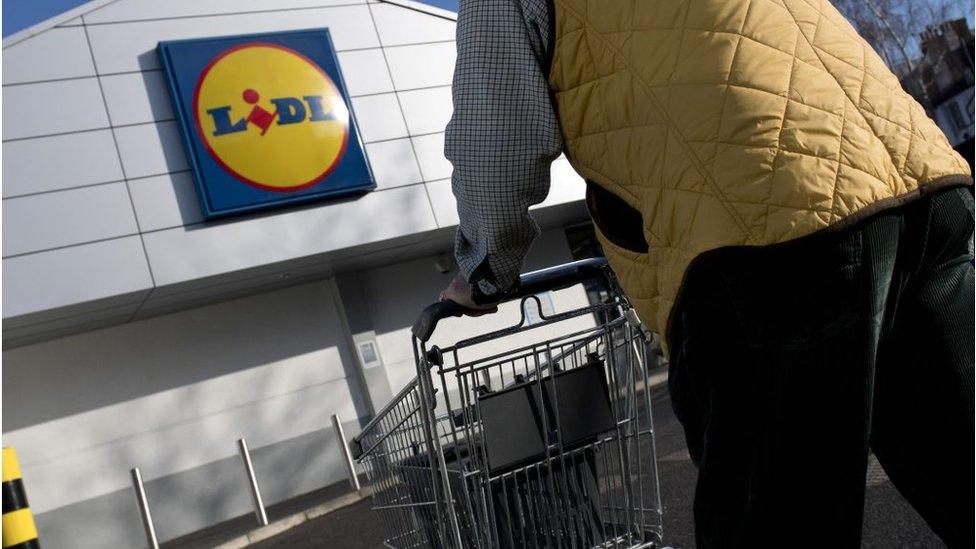
4. The discounters are here to stay
Sales at the discounters Aldi and Lidl soared by more than 23% year-on-year in the 12 weeks to 14 May, according to Kantar.
That's more than twice as fast as sales are growing at the UK's top two supermarkets, Tesco and Sainsbury's.
The discounters have been gaining share for a decade but have been boosted by the cost of living crisis, as customers look to save.
Last year Aldi overtook Morrisons to become the UK's fourth biggest supermarket, and Adam Leyland, editor of the Grocer magazine, thinks Lidl could soon be fifth.
"Historically the discounters were a second shop for staples and discounts, but we're seeing Aldi and Lidl increasingly becoming a main shop with secondary shops elsewhere," he says.
"However, few people do all their shopping at an Aldi or Lidl - they tend to be part of a repertoire."
Their rise has coincided with an increase in price matching and the expansion of basics ranges at other supermarkets which are fighting back.
Take the high-end grocer Waitrose, which tells the BBC that at £1.25 for six, its Essentials eggs are cheaper than Aldi and Asda's.
5. People turn to loyalty schemes for discounts
The number of in-store deals at supermarkets has fallen sharply since 2014, according to Kantar. Back then they accounted for 40% of all grocery spending, today it's 25%.
Instead, shoppers are increasingly turning to supermarket loyalty schemes to access discounts.
These schemes used to be about collecting points that could be exchanged for experiences such as days out. But most have been revamped or expanded to offer in-store or personalised deals for shoppers.
Recently launched examples include Tesco's Clubcard Prices scheme, Morrisons More (which replaces its My Morrisons scheme) and Lidl Plus.
In order to access a loyalty scheme promotion you have to scan your card or app when you pay. In return retailers collect data on you which can they can sell to brands for marketing purposes.
The schemes are not really about improving loyalty, says Mr Leyland, as most shoppers will be members of multiple schemes.
"Once there was a physical limit on the number of cards you could carry in your wallet, but nowadays you can have an unlimited number of loyalty scheme apps on your phone."
- Published22 May 2023
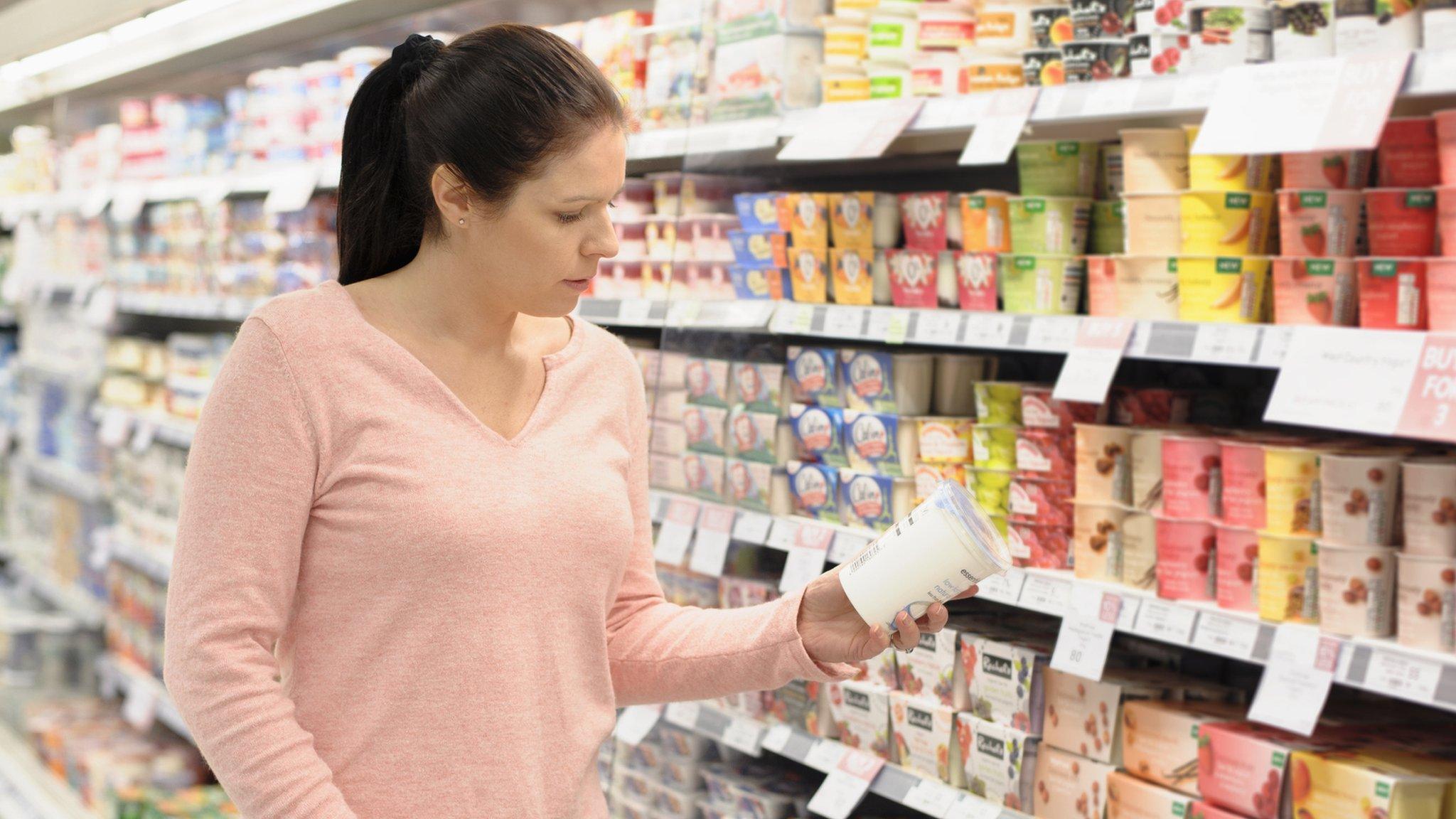
- Published24 May 2023
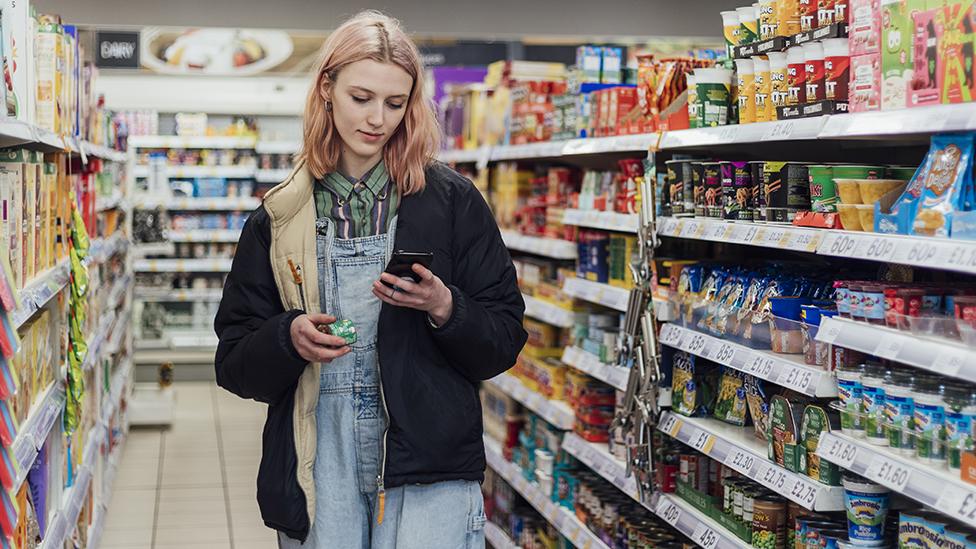
- Published2 June 2023
